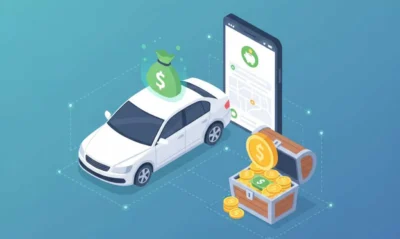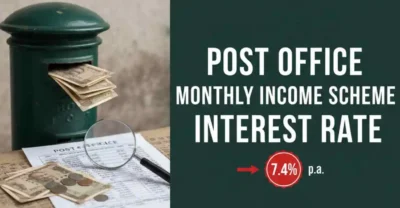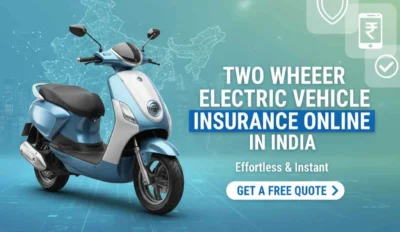Driving for Uber, Lyft, or even Ola in India can be exciting. You set your own hours, meet new people every day, and potentially earn a solid income. But here’s the thing—rideshare driving also comes with financial uncertainties. One week you’re making great money, and the next week a sudden car repair or slow demand hits your wallet hard. That’s where an emergency fund becomes your safety net.
Most drivers know they should have an emergency fund, but very few actually manage to build one effectively. In this guide, I’ll break down the best emergency fund hack for rideshare drivers that’s practical, easy to stick with, and works whether you’re in the U.S. or driving for Ola/Uber in India.
Why Rideshare Drivers Need an Emergency Fund
Unlike salaried employees who get consistent paychecks, rideshare income fluctuates. Some weeks, you hit your targets easily, and other weeks you barely break even after gas and maintenance. Add to that the reality of:
- Unexpected car breakdowns
- Rising fuel prices
- Fewer ride requests during off-peak seasons
- Health emergencies (no employer insurance)
Without a financial buffer, one bad week can set you back for months. That’s why having even a small emergency fund makes a world of difference.
Read Also: How to Use LLMs to Summarize Your Bank Statements
The Best Emergency Fund Hack for Rideshare Drivers
Now, let’s get into the actual hack.
The smartest and simplest method is this:
Automatically save a percentage of every ride into a separate account.
Sounds obvious? Sure. But here’s the twist that makes it powerful—don’t think in percentages of income, think in “one ride per day.”
The “One Ride Per Day” Rule
Instead of stressing about percentages and math, commit to setting aside the income from just one ride per day into your emergency fund.
- If you make $15 from that ride, move it to savings.
- If you’re in India and earn ₹250 from that trip, stash it away.
Do this consistently, and by the end of the week, you’ve got at least $100 or ₹1,750 tucked away—without feeling like you’re cutting into your main earnings. Over months, that grows into thousands.
Read Also: Post Office Investment Plan
Why This Hack Works Better Than Traditional Saving Advice
Traditional financial advice says to save “20% of your income.” For rideshare drivers, that’s unrealistic because income swings wildly. Some weeks, you might not even hit your goal.
But by focusing on just one ride per day, you create a system that’s:
- Simple: No complex math or budgeting apps needed.
- Flexible: If you work 5 days, you save 5 rides. If you drive 7 days, you save more.
- Psychologically easy: You don’t feel deprived since it’s just one ride’s worth.
This hack works whether you’re driving part-time in Los Angeles or full-time with Ola in Mumbai.
Building Your Fund Faster with Side Bonuses
Want to speed things up? Pair this hack with a few extra steps:
1. Use Cashbacks and Rewards
Apps like Paytm (India), Rakuten (U.S.), or even Uber’s own debit card rewards can add small amounts to your savings without extra effort. Redirect these rewards straight into your emergency fund.
2. Take Advantage of Surge Pricing
Whenever you earn extra during peak hours, set aside half of that “bonus” instead of treating it like extra spending cash.
3. Micro-Investing Apps
In the U.S., apps like Acorns round up spare change into investments. In India, platforms like Groww or Zerodha allow small SIPs (Systematic Investment Plans). Linking your emergency savings with these tools can multiply your growth.
Read Also: Bank of India FD Rates for Senior Citizens 2025
How Much Should Rideshare Drivers Save?
The rule of thumb is to have at least 3–6 months’ worth of expenses in your emergency fund. For a rideshare driver, this includes:
- Fuel costs
- Insurance
- Car loan or EMI payments
- Basic living costs (rent, groceries, bills)
If your monthly expenses are $1,500 (or ₹50,000 in India), aim for $4,500–$9,000 (₹1.5–3 lakh). It sounds big, but remember—you’re starting with one ride per day. Slowly but surely, it adds up.
Best Emergency Fund Hack for Rideshare Drivers in India
Indian rideshare drivers face unique challenges like fluctuating fuel prices, EMI obligations, and fewer passenger tips compared to Western countries. That makes an emergency fund even more critical.
Here’s how to apply the hack in India:
- Set up a free digital savings account with banks like Kotak 811 or Paytm Payments Bank.
- After every shift, transfer at least ₹200–₹300 from your daily earnings.
- Treat cash tips as bonus savings—stash them directly in your fund instead of spending.
- Use UPI apps to create a recurring auto-transfer, so you don’t forget.
This approach keeps your savings separate from your main account and prevents accidental spending.
Read Also: Two Wheeler Insurance for New Bike
Common Mistakes Drivers Make When Saving
- Mixing funds in one account. If it’s in your regular account, you’ll spend it.
- Waiting to save until the “good weeks.” You’ll never start if you wait for extra cash.
- Relying only on loan apps. They might help in emergencies, but constant borrowing keeps you trapped in debt.
FAQs
How to make $1000 a week with Uber?
It’s possible, but it depends on your city. Drivers who work 40–50 hours weekly, focus on peak surge times, and combine rides with food delivery often hit $1,000. Using a strategy like targeting airports and nightlife zones also boosts weekly income.
What is the loan app for rideshare drivers?
In the U.S., apps like Gridwise and Moves Financial offer driver-focused cash advances. In India, platforms like KreditBee or PaySense provide small personal loans. But remember—loans are short-term fixes, not replacements for an emergency fund.
How to get 5000 from Uber?
Uber often runs promotions, referral bonuses, or guarantees for new drivers. In India, you may need to complete a set number of trips to unlock bonuses. These are great for building your emergency fund faster if you stash the entire amount.
What’s the best emergency fund hack for rideshare drivers in India?
The one-ride-per-day saving method works best. Combined with digital wallets and auto-transfers, Indian drivers can build a fund without depending on loans.
Should I invest my emergency fund or keep it in cash?
Emergency funds should be liquid—meaning easy to withdraw. A high-yield savings account or instant access digital account is best. Investments are better for long-term goals, not emergencies.
Final Takeaway
The best emergency fund hack for rideshare drivers isn’t complicated. It’s simply committing to save the income from one ride per day, no matter what. It’s easy to track, doesn’t feel overwhelming, and works in every market—from Uber in New York to Ola in Delhi.
Over time, that small daily habit builds into a cushion that protects you from car repairs, medical bills, or those dreaded slow weeks.
What’s your take on this topic? Share your own saving strategies in the comments—I’d love to hear how you’re managing your rideshare finances.





